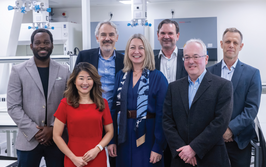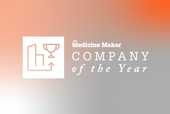The Patient Voice
Pharmaceutical products are made for patients, so it is essential that drug development incorporates the patient view

Launching new products is a source of growth and sustainability for any industry, but innovation is particularly important for pharma, which thrives on discovering new molecules for the treatment of acute and chronic diseases. Because of the pharma industry, effective therapies exist for the major chronic illnesses and, increasingly, for more complex and life-threatening diseases as well. Life expectancy has grown along with therapeutic advancements, but so too has the number of patients living with multimorbidity and polypharmacy. In addition, downsides have surfaced, including a rise in medication-related hospitalization, medication errors, and, unexpectedly, poor therapeutic outcomes.
Medication-related problems are a major cause of unplanned hospital or emergency department admissions, especially in older patients, as well as a leading cause of premature death in US hospitals (1). Hospital admissions could have been predicted and prevented in over 60 percent of cases (2), and it is estimated that over 80 percent of medication problems occur on the patient level (3). Today, there is increasing focus on seeing the patient as an active partner in medication management and therapeutic effectiveness – and ensuring that pharmaceutical products are usable in the real world to help patients take their medicines as intended.
Design partners
When we buy a consumer product, our choice is based on value and perceived benefit – mainly ease of use, functionality, and expected outcomes. For products like smartphones, many different customized versions exist to cater to various user groups. Market research and consumer involvement have been established processes for many years. Including consumers in the development process makes them active partners and helps ensure products are designed to their needs.
This approach is slowly coming to the pharma industry; for example, the FDA introduced human factor and usability engineering in 2016 for medical devices to ensure they were safe and suitable for use by the intended patient population (4). The benefit of patient involvement in medical device development can be demonstrated by the optimization of a prefilled syringe for use by rheumatoid arthritis patients (5). Such patients can struggle to handle drug delivery devices, but an ergonomically designed syringe significantly eased the self-administration of injections.
For many years, non-adherence was regarded as poor patient behavior that could be solved with better instruction. But when the FDA started an initiative to collect direct patient feedback on treatments in early clinical trials – without the interpretation of healthcare professionals – it became obvious that patients often change or stop the regimen because they experience adverse reactions that interfere with their daily lives and outweigh the perceived benefit of the therapy. To understand patients’ views on new drug therapies, the FDA has introduced a plan for “Patient-Focused Drug Development” guidelines. The guidelines describe “a systematic approach to help ensure that patients’ experiences, perspectives, needs, and priorities are captured and meaningfully incorporated into the development and evaluation of medical products throughout the medical product life cycle.” (6). As such, patient-focused development will, in the future, become part of the drug evaluation and approval process.
Involving the target patient population in a drug development program is still far from common in the pharma industry. There are good reasons for this; the early stages of drug development come with high attrition and high risks, coupled with uncertainties on the specific clinical indication, including dose regimens, timelines, and regulatory requirements. When clinical proof is established (around phase II), the market formulation has to progress very rapidly, leaving limited time for the pharma company to consider the patient voice in their established formulation and drug product development processes. Unsurprisingly, new drug products usually end up being repetitions of standard tablets that have not been tested for true usability by the target patient population.
Considering the needs of patient populations should not be a burden for a drug development program; it is simply a matter of selecting the right options at the start of commercial product development and understanding the needs of patients in real-world settings. Consider older or multimorbid patients; the medicines may prevent fatal events in the future, but could have a negative effect on the patient’s present quality of life and plans. These patients also have more specific needs than younger, healthier patients; for example, multimorbidity is often associated with the decline of functional capabilities like grip strength, dexterity, eyesight, hearing, and cognition (7). Increasing the number of drugs can also lead to complex treatment schedules difficult for even professional caregivers to compile as intended (8).
Recent studies reveal that patients deal with medicine usability issues in their own way based on learning with prior medications. Crushing or splitting larger tablets for swallowability reasons was seen as normal practice, without even considering that the leaflet instructions might not allow such procedures. Another important issue is product identification after a tablet has been released from the packaging into, for example, a multiple-compartment compliance aid. Many tablets are similar in size, shape, and color (9). There is limited guidance on what real patients can differentiate best, but identification of twelve different solid dosage forms was investigated in type 2 diabetes patients. The shortest identification times and lowest error rates were observed for colors, especially bichromatic forms, followed by shape and size. Color was recognized very easily (10), whereas shape depended on perspective. Size determination required direct comparison and a significant size difference. Most importantly, all volunteers used “semantic cues” to describe the search item (e.g., blue, yellow, round). Colors are learned from early childhood and have a clear name, unlike shapes, which are not always straightforward; descriptors like the “diet”, “slim,” or “funny one” were just some examples used (11). Other research groups investigating the acceptability of different acetaminophen dosage forms found that the most accepted oral dosage forms in older patients were capsules, closely followed by oral disintegrating tablets and powders (12).
Listen to the voices
The patient voice is a rapidly growing area of science – and collaborations are emerging to help translate research findings into better-optimized medicines for patient use. For example, the Arbeitsgemeinschaft für pharmazeutische Verfahrenstechnik (APV, Germany’s working group for pharmaceutical process engineering) and the Geriatric Medicine Society e.V. have joined forces to create the “Patient Centric Medicine Initiative” (PaCeMe). PaCeMe groups experts from academia, industry, and regulatory science to develop a practical and meaningful roadmap to better incorporate patient needs in commercial drug development.
We cannot ignore the growing evidence that drug usability and acceptability by patients is a critical factor in achieving desired therapeutic outcomes (13). If patients do not take their medicines correctly, they will not get the therapeutic benefit. As human beings and patients, we act on learning and intuition. With consumer goods, we expect self-explanatory design and usability without any barriers – and it is common for these types of products to incorporate views from users during the development process. We need to do the same in pharmaceutical development.
As the pharma industry and its regulatory authorities begin to understand the importance of the patient voice, we can move toward a new, collaborative model of product co-creation. According to ICH Q8 (R2), “in all cases, the product should be designed to meet patients’ needsand intended product performance” (14). The ideal co-creation process should capture what matters to the patient about their medicine, including what they expect from the product and how these expectations can be built into it. The process should include patients, the company, and its suppliers, who will need to develop scientific expertise beyond the excipient and its application. In some cases, there may be “easy win” solutions. For example, by observing how patients handle secondary packaging, you will likely find many ways in which the packaging can easily be optimized to meet patients’ needs.
A more collaborative approach to drug developments that takes into account the patient view will result in optimized medicines with better usability for the patient and acceptability that will finally help to achieve the desired therapeutic compliance.
- M Makary, M Daniel, “Medical errors – the third leading cause of death in the US”, BMJ, 353 (2016).
- NS Patel et al., “Hospitalizations due to preventable adverse reactions – a systematic review”, Eur J Clin Pharmacol, 731, 385 (2017).
- H Kari et al., “Patient involvement is essential in identifying drug related problems”, Br J Clin Pharmacol, 84, 2048 (2018).
- FDA, “Applying human factors and usability engineering to medical devices” (2016). Available at: bit.ly/31DpD1e.
- A Sheikhzadeh et al., “The effect of a new syringe design on the ability of rheumatoid arthritis patients to inject a biologic medication”, Appl Ergonomics, 43, 368 (2012).
- FDA, “Plan for issuance of Patient-Focused Drug Development Guidance” (2017). Available at: bit.ly/3eS6HzB.
- CA Jackson et al., “Multimorbidity patterns are differentially associated with functional ability and decline in longitudinal cohort of older woman”, Age Ageing, 44, 810 (2015).
- SWJ Lau et al., “Improving therapeutics to better care for older adults and the young: Report from an American College of Clinical Pharmacology workshop”, J Clin Pharmacol, 58, 277 (2018).
- A Schenk et al., “Patient behavior in medication management – Findings from a patient usability study that may impact clinical outcomes”, Br J Clin Pharmacol (2019).
- S Stegemann, “Colored capsules – a contribution to drug product safety”, Pharm Ind, 67 (9) 1088 (2005).
- S Stegemann et al., “Identification of different shapes, colors and sizes of standard oral dosage forms in diabetes type 2 patients – a pilot study”, Int J Pharm, 517, 112 (2017).
- F Ruiz et al., “Dosage form suitability in vulnerable populations: A focus on paracetamol acceptability from infants to centenarians,” PLoS ONE, 14 (2019).
- EMA, “Reflection Paper on the pharmaceutical development of medicines for use in the older population” (2017). Available at bit.ly/2YWce2B.
- ICH, “Pharmaceutical Development Q8 (R2)” (2009). Available at bit.ly/2BkP9gZ.
Head of Global Scientific Business Development at ACG



















